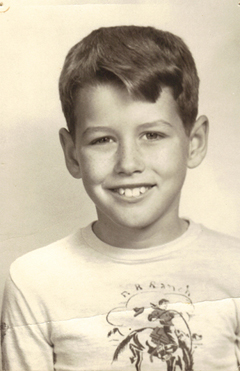EXPERIMENTER: . . . It's absolutely essential that you continue, teacher. Go on.
SUBJECT: Well, I don't know. I don't think I'd like to take that myself, what he is taking right now.
EXPERIMENTER: You have no other choice.
SUBJECT: [sneering] I'll give you your check back if you want.
The second dissenter does not finally refuse until 315 volts and is then told he has no other choice. 'I have no other choice? Hmmm. Hmmm. [pause] I think I have.' (It's not clear to me whether my heart should soar at the man's recognition of the individual's personal responsibility in the matter of obeying authority, or sink because his refusal is in response to a challenge to his ego.)
Milgram discovers in his laboratory that there is a tendency to obey authority. But why? Because of an inherent obedience, deference to men in white coats, an unwillingness to spoil a 'useful' experiment, sadism, the curious inertia in life generally that makes it harder to stop than to start, a social anxiety against speaking up, or just conditioned good manners? It's probably the case that politeness is the reason many victims, knowing it not to be wise, get into the cars of strangers or answer the door to them. Milgram opts for a vaguely socio-biological explanation that supposes social cohesion has made obedience a requirement for "fitness', but even he doesn't seem very convinced. A more central question remains, and is not discoverable in Milgram's experiments. Why did some people refuse when others didn't? Yes, we are inclined to comply easy life, fear of group disapproval, reprisals, wanting to be in with the top guys but what is it about the 35 per cent of refusers that made them eventually able to refuse? It was really only half an experiment, and the less useful half.
Milgram was a whiz at devising sexy experiments, but barely interested in any theoretical basis for them. They all have the same instant attractiveness of style, and then an underlying emptiness. He invented one experiment to test the idea that later became the basis of John Guare's play Six Degrees of Separation, getting students to try to make contact with someone a world away by asking only one close friend for a further contact until the designated person was reached. It turned out that generally it required a maximum of 12 contacts to get to anyone. Interesting, certainly, and a fine idea to pick up and play with as Guare did, but Milgram was not much inclined to tease meaning out of his findings. Perhaps he lost interest after the active part of devising and carrying out the experiment was over, or perhaps he realized that without a theory to test, experiments are little more than expensive though entertaining anecdotes. He also invented the "lost letter' technique of supposedly testing local social and political feeling by dropping hundreds of stamped letters addressed, for example, to white racist and radical black organizations (in reality, PO boxes set up by the experimenters), and made the discovery that fewer letters were picked up and kindly posted to the racist addresses in black areas than letters addressed to the Panthers, and vice versa, of course, in white communities. The findings of these experiments were recorded but they hardly give very deep or valuable information; less, in the case of the lost letter technique, I imagine, than the crudest of opinion polls.
Milgram's study of obedience had a very mixed reception among his colleagues, not just because of its poor theoretical underpinning, and the fact that it was written up in glossy monthlies and popular weeklies rather than by Milgram in a professional journal, but because the experiment itself was thought to be unethical. Putting people under such extreme stress, even though they were told at the end that they had hurt no one, couldn't be done today: academic ethical standards committees would refuse permission for funding. These days, however, nothing prevents similar 'experiments' (Big Brother, the reworking of the Stanford Prison Experiment, Castaway & Co) being carried out repeatedly for our fascination and entertainment on reality TV shows, and I wonder if that doesn't tell us something about the nature of the original experiments. The public, however, read newspaper reports of the obedience experiments in the mid-1960s and bought Milgram's 1974 book in industrial quantities. It seemed to be addressing important problems.
(Note: You can view every article as one long page if you sign up as an Advocate Member, or higher).





